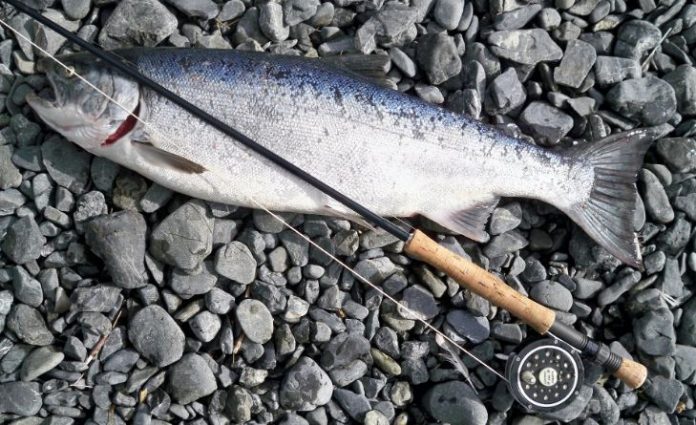If you want to have a successful fishing trip, it certainly helps to have the right fishing equipment. When it comes to fly fishing, your line is an extremely important part of your tackle. Having the right fly line is critical to casting your line accurately.
A good tip is to buy colored lines since it will simply be much easier to see when your line is in the water. Although some anglers are concerned that a colored line will be noticed by the fish, this is really not the case.
The fish are only going to see your leader and the fly. So, you don’t have to worry about the color of the fly line as far as the fish are concerned and you’ll be able to see your line better.
You also need to decide if you want to use a floating line or a sinking line. The advantages of floating lines are:
-Allows you to use dry flies which stay on top of the water
-Casting is easier
-Generally more versatile
Sinking lines are better for deep water fishing, but are harder to recast once the line is in the water.
The shape of the line is also another consideration when choosing your fly fishing line. Fishing conditions will generally be the deciding factor.
Double taper lines are a certain diameter on each end but are wider in the center. They are the simplest to use if you are roll casting.
Another shape is called weight forward. As the name implies, these lines have more weight at the lead part of the line.
But, they can be more difficult to cast. However, their main advantage is that they are easier to use if you will be fishing in windy conditions.
Another tip when buying your fly fishing line is to use the rod maker’s recommendations.
Any given rod is most compatible with a certain weight of the fishing line. Now, you can use any weight you want, but it is at your own risk. Generally speaking, you are better off going with what the rod manufacturer has designed the rod for.
Following are some good guidelines for determining the proper weight of fly fishing line for various fishing scenarios:
-Use a 3 to 5 weight line for small streams for small trout or panfish.
-Use a 5 to 7 weight line for fishing medium rivers for trout, bass, and most panfish.
-Use a 7 to 9 weight fly line when fishing for big trout, salmon, and bass in big rivers and light saltwater.
-Use a 12 weight line when going for the really big ones.
You should also consider buying fly line backing. There are two reasons for this. The first is it will fill up your fly reel before you get to the actual fly line. This way it won’t take so long to reel in your line.
And, secondly, it will allow the fish to run out farther than the line itself. It’s not a big deal for fishing for small trout in streams, but you might want it if you’re going after much bigger fish like tarpon.
And remember, once you’ve purchased your fishing line, it’s very important to take good care of it.
It is especially critical to keep your line clean. Fly lines will pick up dirt and film from the water – so be sure to clean them before putting them away.
Use these tips on choosing the right fly fishing line and you will have many fun and successful days on your favorite lakes and streams going after your favorite fish.

